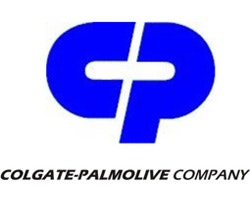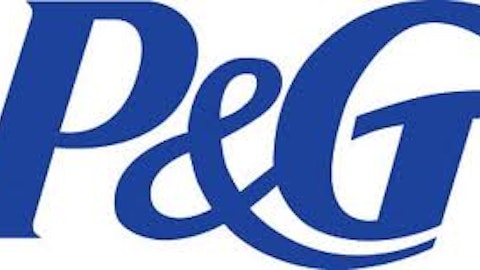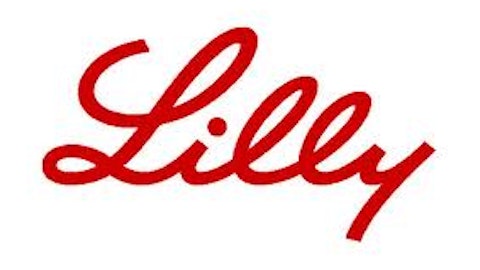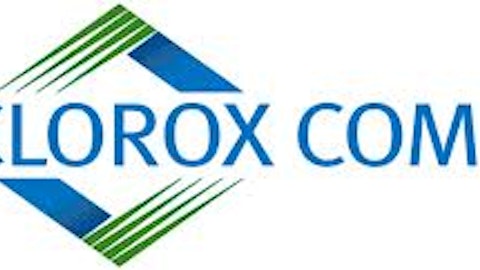
Although it is difficult to decipher whether or not the market is overvalued, or indeed undervalued, it is possible to gauge to a certain degree how much value is in an individual stock based on its historic valuation. So, based on an average of historic price-to-earnings multiples taken every day for the last five years, here are three stocks that appear overvalued compared to their own historic valuations.
The results
First up is Colgate-Palmolive Company (NYSE:CL). Colgate-Palmolive has been sought after for the past five or so years as investors look to the company to provide a source of calm in uncertain markets. However, this has now left the stock looking slightly overvalued. Indeed, over the past five years, Colgate-Palmolive Company (NYSE:CL) traded at an average trailing-12 month P/E of 20.3 but, the company now trades at a trailing-12 month P/E of 22.8, making it look about 12% overvalued.
Colgate-Palmolive Company (NYSE:CL)’s earnings yield is 4.2%, below the market average of 5.1% and signifying that the company is overvalued compared to the rest of the market.
Furthermore, Colgate-Palmolive Company (NYSE:CL) looks overvalued on other metrics. Compared to the rest of the sector, Colgate-Palmolive trades at a forward P/E of 18.7, compared to the sector average of 17. The company also trades at a price-to-sales ratio of 3.2 compared to the sector average of 1.9. Moreover, Colgate-Palmolive Company (NYSE:CL) trades at a price-to-book ratio of 31, more than three times greater than the sector average of 10.
Still, Colgate has under-performed the S&P 500 (INDEXSP:.INX) so far this, rising only 15% compared to the index’s 18.8%; but the stock has made most of its gains during the last two years.
Still, as a producer of the all essential toothpaste as well as other hygiene essentials, Colgate-Palmolive Company (NYSE:CL) is not going to see demand for its products fall any time soon. That said, Colgate’s growth is slow predicted to be 1% for this year. Moreover, Colgate’s debt has grown by 75% since 2010 and shareholder equity has fallen 20%, which is a worrying trend as eroding shareholder equity can destroy long- term shareholder value.
This candy maker looks too sweet
Second, Hershey Co (NYSE:HSY) , which has also been heavily sought after as investors seek safety in the defensive candy maker. However, right now the company looks overvalued on a historical basis. The company trades at a trailing-12 month P/E of 30 compared to its five-year average of 24, indicating that the company is overvalued by 25%.
Moreover, the company’s stock trades at a forward P/E ratio of 23 compared to the confectionery sector average of 17.2. Hershey Co (NYSE:HSY) also trades at a price-to-sales ratio of 3.1, which is 60% above that of its closest peers Mondelez International Inc (NASDAQ:MDLZ) and Rocky Mountain Chocolate Factory, Inc. (NASDAQ:RMCF), which trade at an average price-to-sales ratio of 1.9.
Hershey Co (NYSE:HSY)’s earnings yield is 3.3%, below the market average of 5.1% signifying that the company is overvalued compared to the rest of the market.
Moreover, Hershey Co (NYSE:HSY) trades at a price-to-book ratio of 19, significantly above that of its closest peer, Mondelez International Inc (NASDAQ:MDLZ), which trades at a price-to-book ratio of 1.7. After outperforming the S&P 500 by 10% so far this year, it maybe time to give Hershey Co (NYSE:HSY) the cold shoulder.
Overbought tobacco
Lastly, cyclically defensive company, Reynolds American, Inc. (NYSE:RAI). As a tobacco company, Reynolds American, Inc. (NYSE:RAI) is traditionally a company that offers the best returns in times of uncertainty. However, right now Reynolds American, Inc. (NYSE:RAI) is trading at a 59% premium to its five-year historic average trailing-12 month P/E ratio. (Reynolds’ five-year average P/E is 14.5 compared to the current ratio of 23).
Elsewhere, Reynolds American, Inc. (NYSE:RAI) trades at a price-to-sales ratio of 3.5, which is 25% above the tobacco sector average of 2.8. The company also trades at one of the highest forward valuations in the group. Trading at a forward P/E of 15.2, Reynolds American, Inc. (NYSE:RAI) is the most expensive in the tobacco sector, beating the likes of larger peers, Philip Morris International Inc. (NYSE:PM) and Altria Group Inc (NYSE:MO).
Like sector peer, Lorillard, Reynolds American, Inc. (NYSE:RAI) is facing uncertainty over the FDA’s position on menthol cigarettes. Around 30% of Reynolds’ revenue comes from its menthol ranges so this could be a big headache for the company. And with the FDA ramping up their rhetoric on the issue, it could be time to abandon Reynolds in favor of a cheaper peer.
Foolish summary
All in all, it is difficult to predict if the market is either overvalued or undervalued. However, these three companies all look to be overvalued based on their historic average valuations. Moreover, all three companies are in the historically expensive consumer-defensive sector, a group which has been sought after during the past few years as a defense from uncertainty.
Overall it would be wise to avoid these companies and maybe look for some value elsewhere.
The article These Stocks Are Expensive According to Several Metrics originally appeared on Fool.com and is written by Rupert Hargreaves.
Fool contributor Rupert Hargreaves has no position in any stocks mentioned. The Motley Fool has no position in any of the stocks mentioned. Rupert is a member of The Motley Fool Blog Network — entries represent the personal opinion of the blogger and are not formally edited.
Copyright © 1995 – 2013 The Motley Fool, LLC. All rights reserved. The Motley Fool has a disclosure policy.




